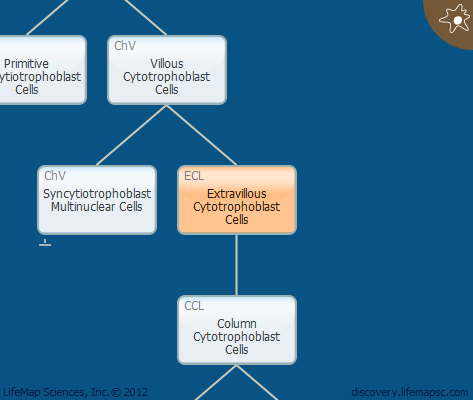-
Embryonic Development
-
Stem Cell Differentiation
-
Regenerative Medicine
All in Vivo Cells
> Cell Card
Plc.ECL.ExtCCs
Extravillous cytotrophoblast cells are the cells of the outermost layer of the fetal component of the human placenta. The extravillous cytotrophoblast cells located proximal to the villous stroma are proliferating cells, whereas cells located distal to the villous stroma, called column cytotrophoblast cells (a subtype of the extravillous cytotrophoblast), undergo epithelial-mesenchymal transition (EMT), have invasive characteristics and are no longer proliferative.
The extravillous cytotrophoblast cells in the human placenta are parallel to the secondary trophoblast giant cells in the mouse placenta which make up the outer layer of the mouse placenta. Giant cells are terminally differentiated polyploid cells that are formed by endoreduplication and mediate invasion of the conceptus into the maternal decidua. They of diverse origins, with a first wave of primary giant cells arising from mural trophectoderm cells, whereas subsequent secondary giant cells arise from the ectoplacental cone progenitor cells, and may also directly arise from the chorion.
Some view the human extravillous cytotrophoblast as analogous to the mouse glycogen cells.
Read More

Multiple Ancestors
Single Ancestor
No Descendants
Develops from
Part of Parent



